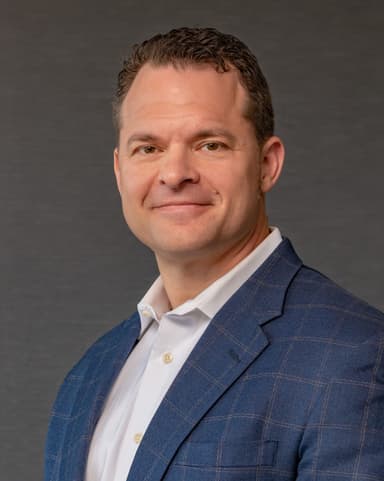

Joe Fried · Michael Goldberg
Holding Amazon Responsible in Delivery Van Cases
![]() August 22, 2024 ||TLU n Demand
August 22, 2024 ||TLU n Demand
Bradfield v. Amazon
Trial Summary
Past Meds: $206,680.92
Future meds: $0
Best pre-trial offer: $3.5 mil
Verdict: $16,206,680.92 (Meds plus $4 mil past and $12 mil future pain and suffering)
Special Interrogatories:
- Amazon Logistics exercised control over the delivery service provider and the delivery driver such that it created the relationship of employer and employee.
- Jury found against defendant Amazon logistics for negligent training.
Allocation:
- Father 0%
- Adult supervisor 5%
- Driver and his employer(s) 10% (Employers included the delivery service provider AND Amazon)
- Amazon Logistics for negligent training 85%
Extra Importance of Case: First case in Georgia to address whether Amazon Logistics is responsible for the delivery drivers that it maintains are independent contractors employed by independent delivery service providers.
Case Facts:
An 8-year-old was slowly crossing a residential street on a small electric bike (that looks like a dirt bike made for kids) when he was run over by a delivery van and dragged 21 feet. The boy suffered a broken pelvis (internal fixation) and a degloving injury to his leg (skin and muscle) which required skin grafts and left him with serious scarring (but otherwise full use of his leg).
The incident was not captured on any video and the only witnesses were the van driver, and 4 very young children aged 4, 5, 5, and 8.
According to the delivery driver, he stopped to let a group of kids cross the street. After several kids crossed, he thought it was safe and started to pull forward. He did not see the 8-year-old on the electric bike. He heard a scraping noise, stopped and saw the boy and bike lodged under the van.
The neighbor who was supposed to be watching the kids testified that a few minutes before the incident she had run inside to go to the bathroom. At the time she went inside the kids were playing on a swing in her yard (not near the street) and the electric bike was in her garage. This occurred on a road with double cul-de-sacs and very low traffic.
Both sides retained experienced accident reconstruction experts. They disagreed on the direction the 8-year-old was crossing but agreed that the 8-year-old was going very slowly consistent with waddling the bike across the road (2-3 mph) and that the van was also going slowly consistent with accelerating from a stop. We did a reenactment with same make and model van and electric bike. We had a child who was the same height as the 8-year-old ride the bike in front of the stopped van in both directions. Importantly, this reenactment proved that whichever way the child was coming, he was visible to the driver if the driver looked (unless packages on dash blocked view).
We maintained that Amazon had undertaken to train this driver under the DSP program and that they did not do so adequately in two regards. First, they did not train this driver before the incident about what to do when encountering children in residential areas even though this is a common hazard for delivery drivers. The driver received training on this subject 17 days after the incident. Amazon claimed that they rolled out the training earlier, but the driver had not taken it yet before the incident and that was not their fault. We also maintained that Amazon did not train the driver not to use the dashboard of the van as a sorting area for packages – especially in a situation where the driver was driving a rental van that did not have the shelving typically in Amazon branded vans.
It was stipulated that the driver was an employee of the delivery service provider (DSP). We were asserting that the driver was also the “employee” of Amazon because Amazon controlled the time, method and manner of how the driver was to perform his duties. Because Amazon does not want to have responsibility for these van drivers, they fought this issue very hard. We presented overwhelming evidence of control by Amazon over just about every aspect of how the DSP operates and how the driver performs his job.
The DSP was owned by a very nice man who was retired military. He was likeable and very proud that he was his own “independent” businessman. When he applied to be a DSP, he had no experience in the delivery business. Amazon set him up and taught him from A-Z how to be a DSP. The contract he signed with Amazon had one short paragraph that said the DSP was an independent contractor and had exclusive control over its employees; but that was followed by pages of contract, policies, procedures, guidelines, rules, specifications and requirements that the DSP must follow. We were also able to show how Amazon exercises control over the drivers from onboarding, through training, monitoring, discipling etc. The driver is required to use the Amazon delivery app, which essentially tells the driver exactly what to do step by step. Amazon’s control is overwhelming.
The defense blamed the father of the 8-year-old and the neighbor who was supposed to be supervising the kids. Amazon blamed the father of the 8-year-old for not reading the warnings on the electric bike and not supervising his son. The father was home caring for 2 month old foster child and had supervised his child learning how to and becoming proficient in the use of the electric bike before allowing him to ride. Blaming him was foolish. Amazon blamed the neighbor for all kinds of things from buying the bike for her 5 year old (manufacturer said it was for 13 year olds) to failing to read the warnings on the bike to failing to supervise the kids. The neighbor bought the bike from Amazon and Amazon reviews showing many people recommending the bike for 4-6 year olds, so this was helpful. Amazon went too far in blaming the neighbor.
The van driver was a 21-year-old nice guy. I believe the jury both liked him and felt that he was a victim of both negligent training and an abusive system created by Amazon. He was required to make over 180 deliveries on the date of the incident. He had been working for 6 hours straight with out a break and I think the jury felt that the expectations were unreasonable.
Just before trial, Amazon moved to seal the courtroom to protect their “confidential” documents and business practices. In the alternative they sought to limit the ability of CVN to stream any part of the trial where these documents and practices would be discussed. This motion was denied.
If you can't attend Live, Watch On Demand